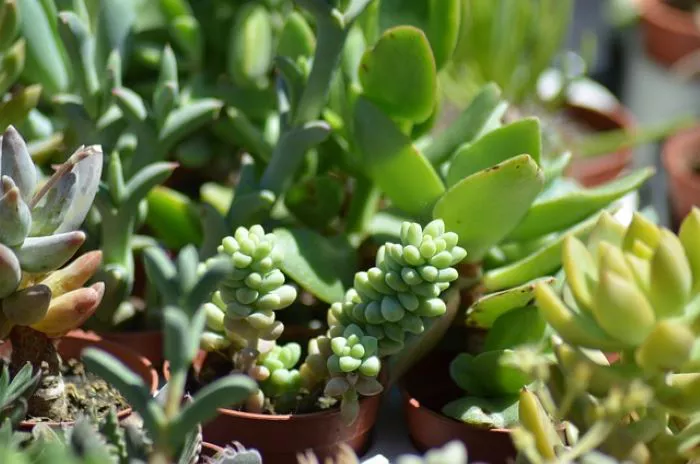Creating a succulent wall hanging is a beautiful way to incorporate greenery into your home decor. This project combines the beauty of succulents with artistic design, resulting in a stunning living piece of art. Succulent wall hangings are versatile and can be customized to fit any space or style. This article will guide you through the process of making your own succulent wall hanging, covering materials, techniques, and care.
Understanding Succulent Wall Hangings
A succulent wall hanging is a vertical garden that features various types of succulents arranged in a frame or container. These arrangements not only enhance the aesthetics of a space but also improve air quality. Succulents are low-maintenance plants that store water in their leaves, making them ideal for wall displays.
Gathering Your Materials
Before you begin, gather all the necessary materials. Here is a list of what you will need
A wooden frame or a wall-mounted planter
A piece of landscape fabric or mesh
Potting soil suitable for succulents
A variety of succulents (Echeveria, Sedum, Aloe, etc.)
Scissors
A staple gun or strong adhesive
Decorative elements (optional) such as stones or moss
A spray bottle for watering
Choosing the Right Succulents
Selecting the right succulents is crucial for the success of your wall hanging. Choose a variety of shapes, colors, and sizes to create visual interest. Consider the following popular options
Echeveria: Known for their rosette shape and vibrant colors.
Sedum: Hardy and diverse, perfect for filling in gaps.
Aloe Vera: Adds height and unique texture.
Haworthia: Compact and easy to care for.
Make sure to choose healthy plants that are free from pests and diseases.
Preparing the Frame
If you are using a wooden frame, prepare it for planting.
Select the Frame: Choose a frame that fits your desired size and style. You can use an old picture frame, a wooden pallet, or a custom-built frame.
Add Landscape Fabric: Cut a piece of landscape fabric or mesh to fit the back of the frame. This will act as a barrier to hold the soil in place while allowing for drainage.
Secure the Fabric: Use a staple gun or strong adhesive to attach the fabric to the back of the frame. Make sure it is taut and secure.
Planting the Succulents
Now that your frame is prepared, it is time to plant the succulents.
Fill with Soil: Add a layer of potting soil to the frame. Use a soil mix specifically designed for succulents to ensure proper drainage. Fill the frame about halfway, leaving enough space for the plants.
Arrange the Succulents: Before planting, arrange the succulents on top of the soil to determine their placement. Consider the height and shape of each plant. Taller plants should be placed in the center or back, while shorter ones can be positioned around the edges.
Plant the Succulents: Once you are satisfied with the arrangement, begin planting. Make small holes in the soil for each succulent. Remove the plants from their pots and gently loosen any tightly bound roots. Place each succulent in its hole and fill in around the roots with soil. Press down lightly to secure the plants.
Add Decorative Elements: If desired, you can add decorative elements such as stones, pebbles, or moss around the succulents. This will enhance the visual appeal of your wall hanging.
Caring for Your Succulent Wall Hanging
After planting, proper care is essential for the health of your succulents.
Watering: Use a spray bottle to lightly mist the succulents after planting. Allow the soil to dry out completely between waterings. Overwatering can lead to root rot, so it is better to err on the side of caution.
Light Conditions: Place your succulent wall hanging in a location that receives bright, indirect sunlight. Succulents thrive in well-lit areas, but direct sunlight can scorch their leaves.
Temperature: Succulents prefer temperatures between 18°C and 24°C (65°F to 75°F). Keep the wall hanging in a stable environment, avoiding extreme temperature fluctuations.
Fertilization: Fertilizing is not necessary for the first few weeks after planting. Once your succulents are established, you can use a diluted liquid fertilizer designed for cacti and succulents during the growing season.
Displaying Your Succulent Wall Hanging
Your succulent wall hanging can serve as a beautiful decoration for your home or garden. Consider the following tips for displaying your creation.
Indoor Display: Hang your wall hanging in a living room, kitchen, or hallway. Succulents can brighten up any indoor space and create a focal point on the wall.
Outdoor Display: If you choose to display your wall hanging outdoors, ensure it is in a sheltered location. Direct exposure to harsh weather can damage the plants.
Creative Arrangements: Consider using multiple frames or varying sizes to create an eye-catching gallery wall of succulents.
Troubleshooting Common Issues
Even with proper care, you may encounter some issues with your succulent wall hanging. Here are a few common problems and solutions.
Overwatering: If your succulents appear wilted or mushy, it may be a sign of overwatering. Allow the soil to dry out completely before watering again.
Pest Infestation: Keep an eye out for pests such as mealybugs or aphids. If you notice any pests, remove them by hand or use an insecticidal soap.
Sunburn: If the leaves of your succulents become brown or crispy, they may be getting too much direct sunlight. Move the wall hanging to a location with filtered light.
Conclusion
Making a succulent wall hanging is a creative and rewarding project that adds beauty to your home. By following the steps outlined in this article, you can create a stunning vertical garden that showcases the unique beauty of succulents. Remember to choose the right materials, plan your design, and provide proper care for your plants. With a little attention and creativity, your succulent wall hanging will thrive and bring joy to your space for years to come. Enjoy the process of creating and nurturing your living art piece, and let it inspire your love for gardening and design.


